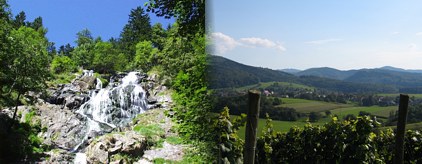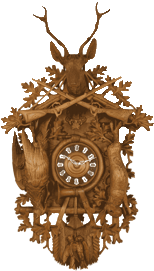History of the cuckoo clock
There are various ideas about the birth of the Black Forest cuckoo clock, however they are only speculation, as even to this day, it has not been agreed when the first cuckoo clock was actually made in this area. The term cuckoo clock dates back to a Patrician from Augsburg, who mentioned a cuckoo clock that belonged to the Kurfürst August of Saxony in 1629. Almost twenty years later a mechanical organ which had various figurines attached that moved to tones, was described in the Musurgia Universalis, a widely-known music handbook. One of these figurines was a cuckoo that flapped his wings and his call was imitated by the tone of two of the organ pipes - this typical sound, which has now become world famous is still used today. Inspired by the distinctive sound of this melody, italian architect Domenice Martinelli suggested to hear the cuckoo's call on every hour. Today, all traditional cuckoo clocks follow this simple yet striking suggestion.Historians also disagree about the beginning of the cuckoo clock production in the Black Forest. Some sources suggest the end of the 17th Century, while others believe it was almost one hundred years later. However, the fact is that the success of the cuckoo clock was unstoppable at least by the beginning of the 19th Century as the production figures increased greatly. The production usually took place at home, however the industrial revolution didn't stop progress with the cuckoo clocks: through the move to machined production of the separate pieces in clock factories, production could be increased further until the beginning of the 20th Century. Sales abroad were particularly high, especially for the alarm cuckoo clocks.
Interrupted by both world wars, the success story of the cuckoo clocks continued from mid 20th Century. A large proportion of cuckoo clocks produced today are exported to the USA and now also Asia.


